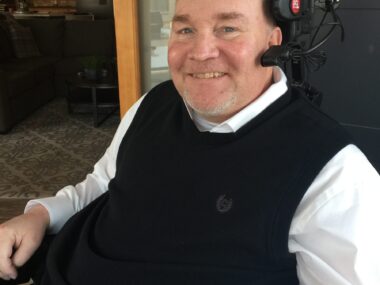Younger, more severaly disabled SPMS patients have higher costs
DISCOVER study reviewed three types of costs for patients in Spain
Written by |

The healthcare costs of secondary progressive multiple sclerosis (SPMS) are high, according to a real-world study in Spain, and higher still for younger patients and those with severe disability who cannot walk unaided, even for short distances.
On average, yearly costs for one patient amount to more than €41,000 (more than $46,000), a large part coming from indirect costs, such as those resulting from lost work or early retirement. While the state system covers most direct healthcare costs, patients mainly bear non-healthcare expenses such as home adaptations.
“Societal policies should be aimed at improving the SPMS care pathway and minimizing patients’ funding of direct non-health care costs,” researchers wrote in “Economic burden of secondary progressive multiple sclerosis: DISCOVER study,” which was published in BMC Health Services Research.
In multiple sclerosis (MS), the immune system mistakenly attacks the protective covering around nerve cells in the brain and spinal cord. Each attack may bring damage that accumulates over time, contributing to worsening disability. The disease usually starts with a relapsing-remitting course, wherein patients experience periods when symptoms worsen or appear for the first time, called relapses, followed by recovery. Over time, symptoms steadily worsen for many, a condition known as SPMS.
While symptoms such as fatigue take a toll on patients’ quality of life, they’re also costly. To get an idea of the economic burden on patients, the national healthcare system, and on society, the researchers reviewed data from 34 public hospitals across Spain.
Analyzing three types of costs
Their study, called DISCOVER, looked at three types of costs: direct healthcare costs (such as doctor visits and treatments), direct non-healthcare costs (such as home adaptations), and indirect costs (such as lost work income), and examined how these costs relate to how well patients function in their daily lives.
Of 297 patients diagnosed with SPMS for a mean of 5.9 years, 185 (62.3%) were women. The patients’ mean age was 54.6 years, and most (88.6%) lived with family. The mean Expanded Disability Status Scale (EDSS) score at their diagnosis of MS was 2 but had increased to 5.1 by the time they had transitioned to SPMS, indicating more severe disability.
In the year before the study, all 297 patients visited a neurologist a mean of 1.5 times, and 196 (66%) visited primary care at least once. More than two-thirds (68.4%) had used disease-modifying therapies and nearly half (48.1%) used rehabilitation or daycare services, “which they usually paid for themselves.”
Most patients (73.1%) needed adaptations at home or in their vehicles, which were usually paid for out of pocket. These included walking aids like crutches (30%) or canes (20.2%). Many patients (41.8%) were assisted by paid caregivers, and a similar percentage (41.4%) by unpaid ones. For daily tasks, 193 (65%) patients needed help, mostly from unpaid caregivers providing more than 130 hours a month.
Only a small percentage of patients (10.4%) were employed. Among them, eight (26%) had reduced working hours and 14 (45.2%) had some level of incapacity due to SPMS. These patients missed a mean of 2.4 hours of work per week and experienced reduced productivity for 14.1 hours weekly. Six (19.4%) were on sick leave.
Among those who weren’t working, 41 (15.4%) had retired early due to their disease. Patients reported losing a mean of 12.1 hours of leisure time per week. Unpaid caregivers also faced impacts, missing 8.6 hours of work and 10.3 hours of personal time each week due to caregiving duties.
Adding up the costs
For the Spanish National Health System (NHS), the average yearly costs for one patient amounted to €11,420 (about $13,000), while patients themselves paid around €8,698 (nearly $10,000). The total annual costs from a societal perspective added up to a mean of €41,481 (about $47,350) per patient.
Total costs included €11,343 in direct healthcare costs, €8,775 in direct non-healthcare costs, and €21,362 in indirect costs. Healthcare costs came mainly from treatments for MS, with most (89.2%) of these covered by the NHS. Patients paid nearly all non-healthcare costs (85.2%), mainly for home or vehicle adaptations.
Patients with higher disability (EDSS score of 6.5) had higher yearly costs than those with an EDSS score of 3-3.5 (€46,263 vs. €34,851). This difference resulted mainly from indirect costs, which rose from €16,680 to €24,289 with greater disability. Patients younger than 45 also incurred significantly higher costs than those 65 or older (€42,570 vs. €30,189).
For SPMS, “costs per patient in Spain are higher than those for other, more [common] diseases, indicating a high patient burden for this type of MS,” wrote the researchers, who noted the burden may stem from the disease’s early onset, long duration, resulting work disability, and increased need for support at home.
While the study didn’t include patients with more severe disability, its data suggest that “SPMS represents an important burden from the NHS, quality of life, and societal perspectives in Spain, with associated costs of more than €41,000 per patient per year,” wrote the researchers, who said their data “allow health authorities to obtain valuable data to plan health policies.”






